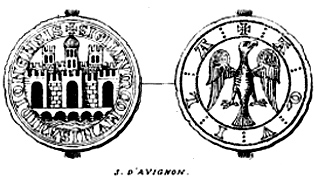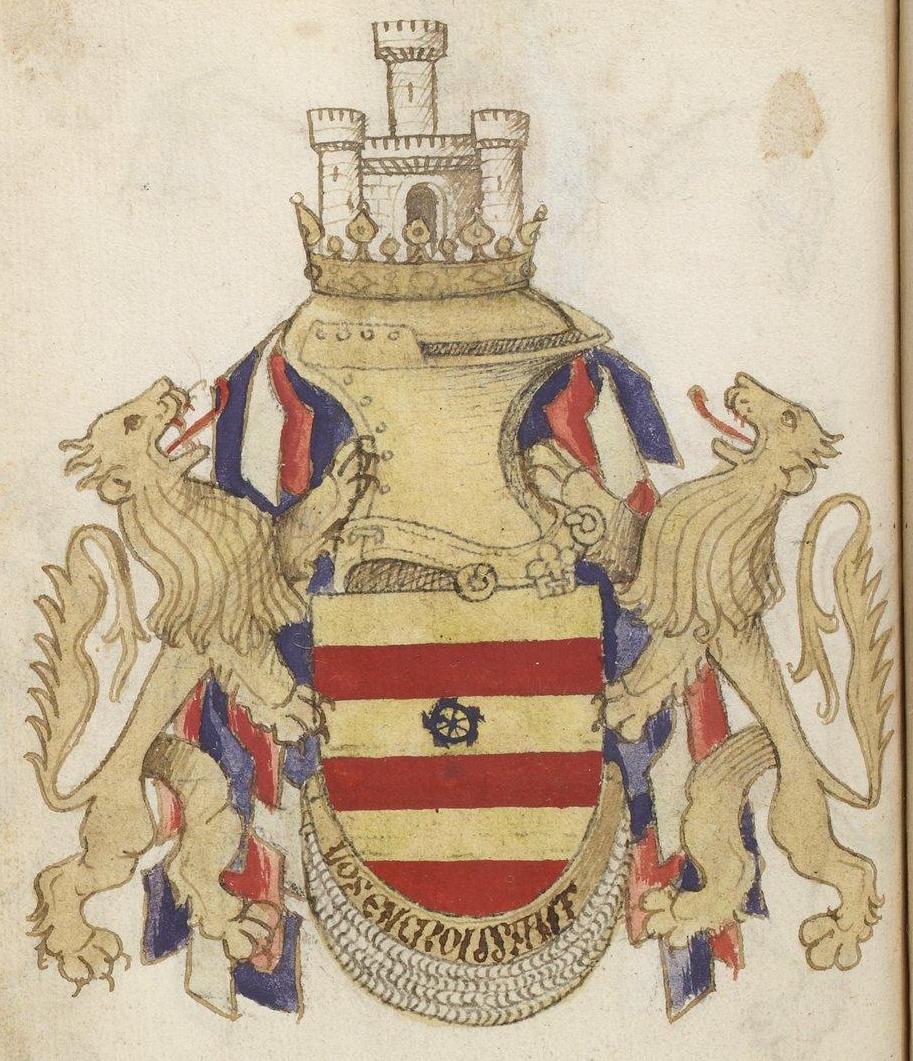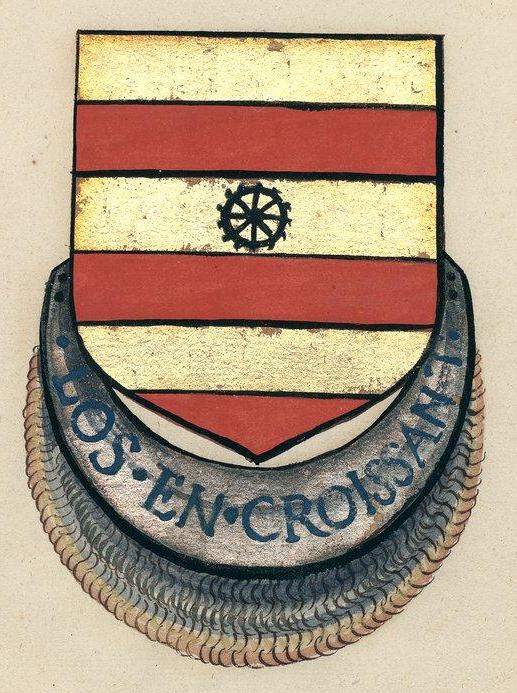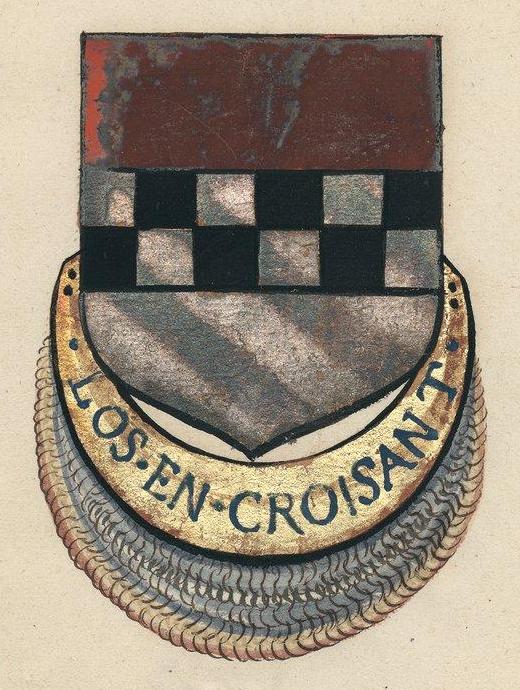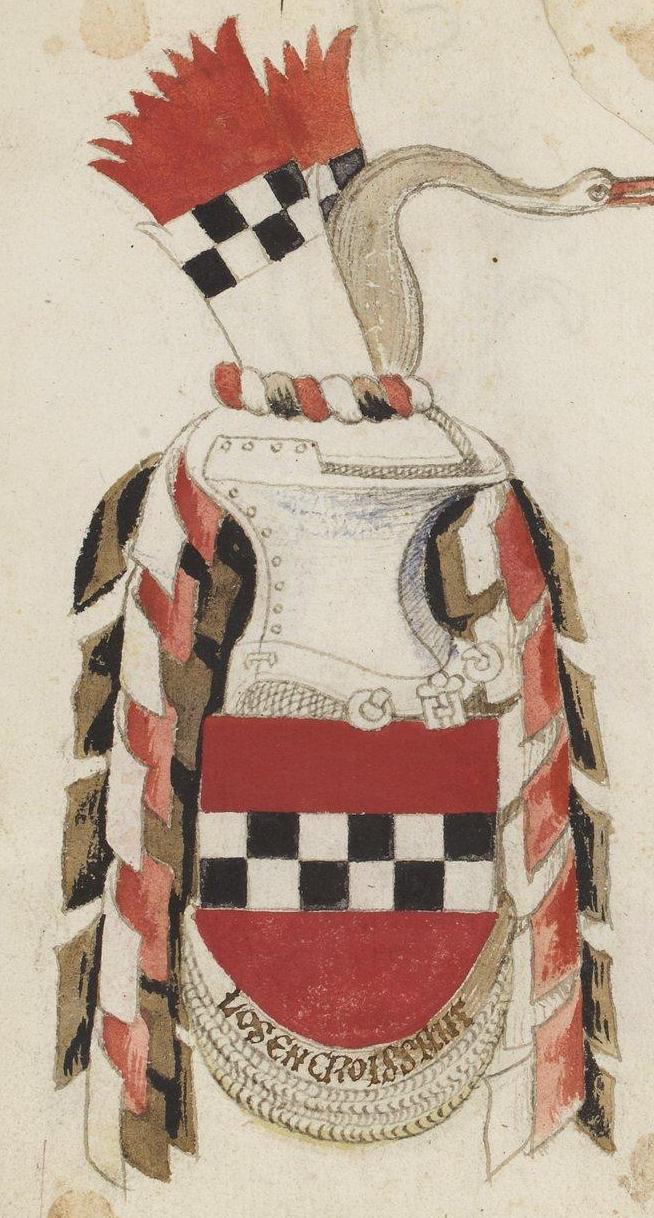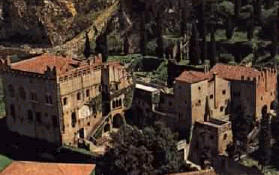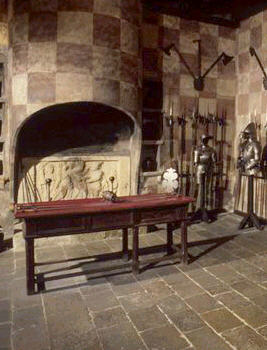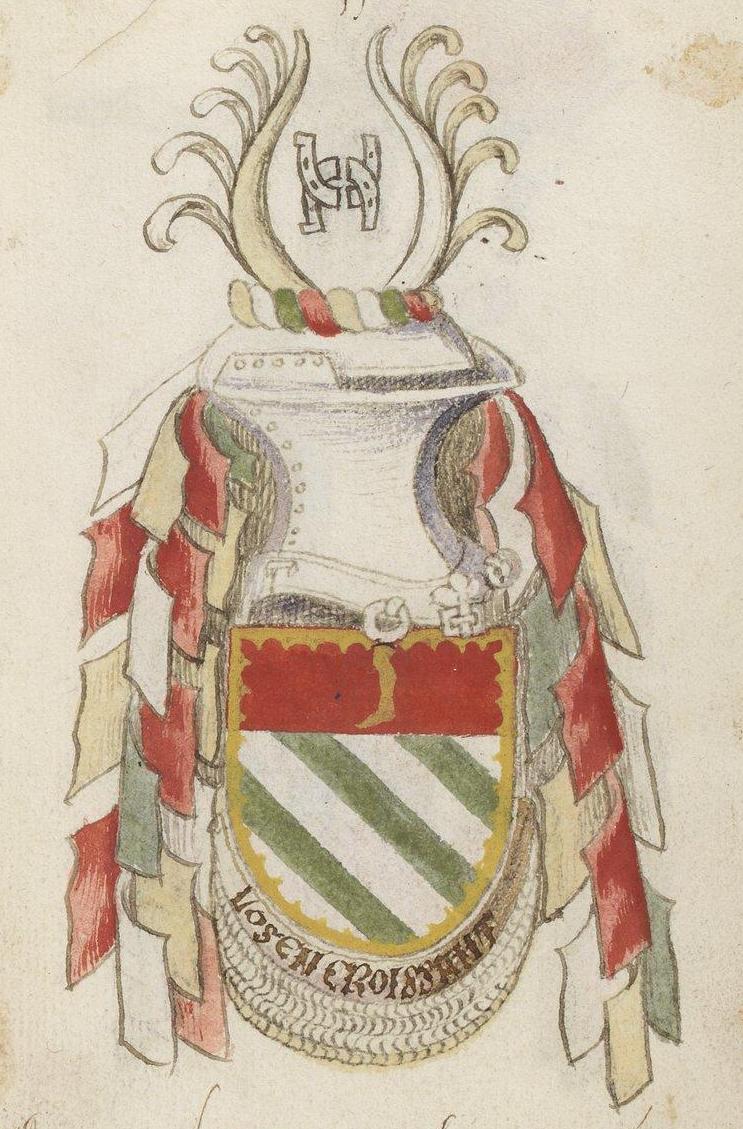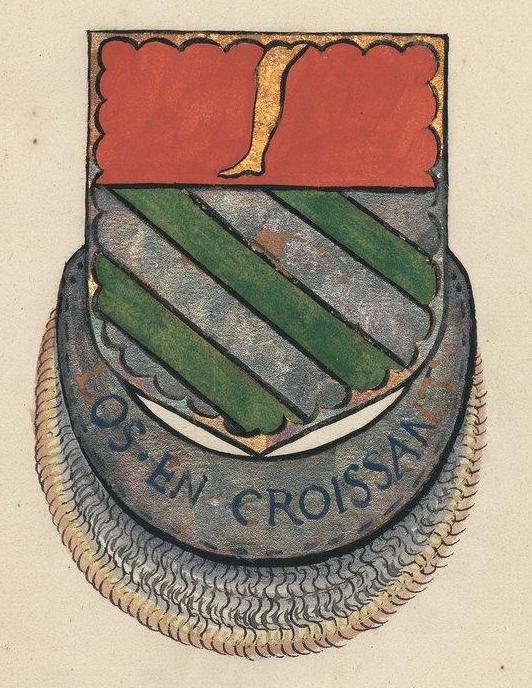Right
But both are linked to King René
And for the first one to Charles VII and Louis XI
And for the second one , to Dauphiné and Provence.
Louis XI was a Crowned Dauphin and he was in 1447 in the Castel of Tarascon with René.
I don't know where was Cossa at this time (1447) but we know that he was with Isabelle de Lorraine since 1435 and Senechal of Provence and Lord of Grimaud since 1444 and was also present and important for the 1449 ProtoTarots deck(s)...
Wikipedia Jean COSSA :
https://fr.wikipedia.org/wiki/Jean_Cossa
He is Knight of the Crescent since 1448
http://www.heraldique-europeenne.org/Ar ... ne_I_1.htm
Another member of his family also Gaspard Cossa : same heraldy without the crown
I also do not forget and remember that one scholar on two states that Cossa brought himself the decks to Provence...hmmm!
"The idea of the gift {to Isabelle de Lorraine] would have come from Scipine Carafa
who stopped at the Venetian Sforza camp outside Milan on his return from Charles VII 's court.
Marcello, Sforza and Giovanni, the core of the Croissant in Italy, were all three together at this time. Carafa came across a deck of cards during his visit to the camp and told Marcello that this sort of gift was perfect for René's wife; Not satisfied with the deck however, Marcello somehow managed to obtain the Visconti xards from inside the city (Milan). He also have the treatise on "tarot" (sic) by Marziano da Tortona that accompagnied them transcribed by Michele Salvatico, a proeminent Venice based scribe, and,
on 12 november 1449, dispathched these to Provence (sic).
He sent them by means of the man who happened to be his house guest : non other than King René right hand man, Giovanni Cossa."
http://www.some.ox.ac.uk/people/oren-margolis/
Maybe false maybe true : for the moment, the topic is opened.
About COSSA born 1400 in Ischia : he'll be one of the powerful person of the Angevins and will be at the side of King René, who will make him Seigneur de Grimaud,Sénéchal de Provence (1444) until his death in 1476.
https://books.google.fr/books?id=YEASDA ... sa&f=false
https://books.google.fr/books?id=qjv-hJ ... sa&f=false
In fact, he's at Isabelle de Lorraine side since before 1435, while René is still emprionned in Burgundy.
https://books.google.fr/books?id=RdWeII ... ne&f=false
Speculation : Could René, from this first proto tarot, have realized later on a hand painted luxury Deck on parchment of his own "fantaisie" and related to his history - painted second half XVth century?
Added November 26
Further speculation : if we admit the possibility of an etymological link between king René "Tarasque" and the Avignon 1505 "taraux" - then the datation would be after the gifts of the geographies of Ptolemeus 1457 or of STRABON 1459 : see
viewtopic.php?f=12&p=18111#p18111
my guess is in favor of a reconstituated return to the original etymologie as given by STRABON and PTOLEMEE in their Geographies that King René receives in 1457 and 1459 from his venetian friend Jacopo Antonio Marcello - the same who sent as gifts for his wife Isabelle de Lorraine via Jean COSSA, Sénéchal de Provence, either in his Provence castle of Tarascon or in his wife's castle of Saumur in Anjou, the "proto-tarots" in november 1449...
Etymologie : "Tarouscon, attestée IIe siècle, dans Strabon. Il dérive ensuite en Tarascone (IVe siècle)."
So if I'm right
TAR - OUSCU
Why?
Because King René is a fervant humanist and receives as gifts in 1457 the Geography of Plolemee and in 1459 the Geography of Strabon.
For sure, he would have had at heart to come back to the ancient name of his city.
This could then give : Tar - ous = Tarous / Taraus / Taraux (attested AVIGNON 1505)
Coming back to the Goldsmidt cards ...
Cartes « Goldschmidt »
Italie?
Provence?, milieu du xve s.
9 cartes, enseignes italiennes (?)
peinture avec fond d'or étampé
parchemin
140x65 mm dos: carmin foncé
King René is described as "
parcheminier" "
bon peintre" et "
enlumineur de chartes" :
https://books.google.fr/books?id=fFIPAA ... ou&f=false
In this case, the stay of dauphin futur king louis xi - figured in the deck as the crowned dauphin - in 1447 would make sense.
in May 1447, Dauphin Louis XI is in Tarascon .
He visits his uncle René d'Anjou married to Isabelle de Lorraine ...
King René is in his Castle of Tarascon during 1447 - 1449.
He gives an important reception for Dauphin Louis XI in 1447 probably May.
"Le château de Tarascon se transforme en un somptueux palais renaissance sous l’impulsion de son fils, le roi René. Au cours de son 1er long séjour à Tarascon de 1447 à 1449, le roi René fait exécuter d’importantes améliorations qui portent le château à son état actuel, c’est de cette époque que datent les ornementations de la cour d’honneur : loggia, niche statues, porches, décoration d’arcade, salle dite "des chantres". Le roi donne des fêtes éblouissantes et la première année, il offre une réception somptueuse à son neveu, le futur roi Louis XI. L’année 1449, apogée du règne de René d’Anjou, marque aussi l’arrêt définitif de la reconstruction du château. "
"Lors de son premier séjour à Tarascon (1447-1449), le dauphin Louis, futur Louis XI, retiré en Dauphiné, rend visite à son oncle, René d'Anjou, roi de Sicile et Comte de Provence en mai 1447 sous prétexte de faire le pèlerinage de Sainte Madeleine à Saint-Maximin et à la Sainte-Baume. Il arrive à Tarascon où son oncle le reçoit avec faste et affection. Il visite l'église Sainte-Marthe comme il se doit et encourage le projet de pratiquer les fouilles de Notre-Dame de la Mer (les Saintes Maries) que son oncle entreprend l'année suivante. Cependant, le Dauphin est venu quérir une alliance auprès de son oncle contre son père le roi de France Charles VII que celui-ci ne peut lui accorder par l'indéfectible amitié et fidélité qui le lie à son compagnon d'enfance. Louis XI devait garder rancune à son oncle de cette visite insatisfaite et stérile"
